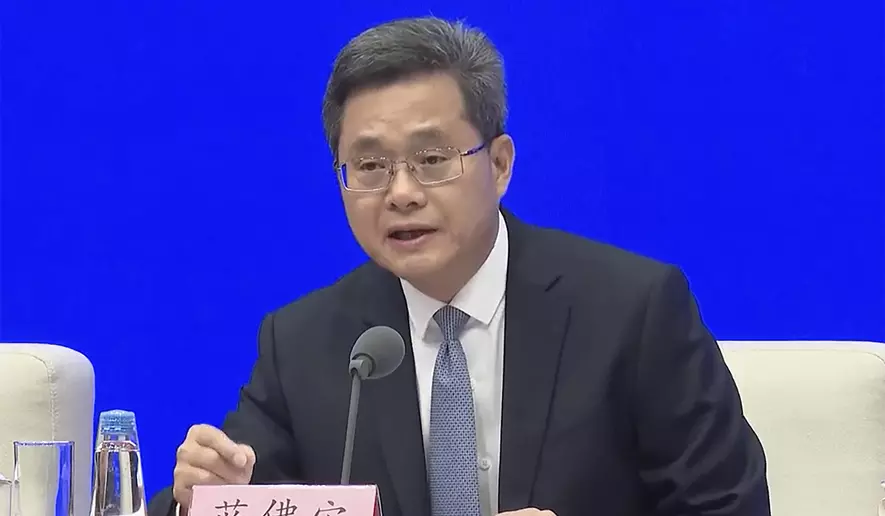China’s Macro Expansion Remains Policy Calibrated
China’s Jan–Sep GDP up 5.2%, industrial output 6.5%, retail sales 3.0%; CGB 10Y at 2.65% and USDCNY near 7.09 as SHCOMP steadies. Markets track SHCOMP and USDCNY for growth momentum and policy risk calibration.

China’s October 2025 statistical releases reaffirm the economy’s slow but stable expansion, underlining the effectiveness of Beijing’s policy calibration amid global uncertainty. In the first three quarters of 2025, nominal GDP reached RMB 101.5 trillion (USD 14.2 trillion at an average exchange rate of RMB 7.15 per USD), with real GDP growing 5.2% year-on-year over January–September.
September single-month industrial production for enterprises above the designated size rose 6.5% year-on-year, reflecting persistent resilience in manufacturing. Retail sales for September increased 3.0% year-on-year, while fixed asset investment excluding rural households grew 3.8% in the year to date. Real estate investment contracted by 4.0% in the same period, extending a multi-year correction in the property sector and confirming the drag on domestic demand.
Policy remains tightly controlled. The People’s Bank of China (PBOC) maintained its medium-term lending facility rate and selectively cut reserve requirement ratios during 2025, ensuring adequate liquidity while limiting inflationary risk. September consumer price inflation registered 0.8% year-on-year, maintaining deflation vigilance but leaving space for targeted credit support. The PBOC set the central parity rate at USD/CNY 7.09 on 23 October, keeping the yuan within a narrow range to manage capital outflows and protect export competitiveness. Fiscal authorities prioritised infrastructure and industrial upgrading, counterbalancing weakness in the property market. The government’s “dual circulation” strategy supported export-facing advanced manufacturing, helping buffer the impact from softer consumer spending and ongoing property sector retrenchment.
Macroeconomic effects are visible across China’s sectoral and financial landscape. The 6.5% industrial output growth in September was powered by electric vehicles, high-tech components, and renewable energy sectors, which offset declines in traditional property-linked industries. Retail sales growth of 3.0% highlighted the ongoing divergence between robust supply-chain performance and moderate household demand, with urban unemployment averaging 5.2% in Q3 2025. Fixed asset investment’s 3.8% expansion in January–September was driven by manufacturing and infrastructure, partially offsetting the 4.0% property investment contraction. In financial markets, the CGB 10-year yield traded at 2.65% in late October, while AAA-rated five-year corporate bond yields hovered near 2.60%. These compressed spreads signal the market’s confidence in PBOC rate management and a benign inflation outlook.
Regional and global context shapes the risk landscape. China’s 5.2% real GDP growth in Q1–Q3 2025 outpaces major advanced economies—US growth averaged 2.1% over the same period, eurozone 0.7%, and Japan 1.2%—but lags post-pandemic highs and several EM peers such as India, which reported 6.1% growth in the first three quarters. The yuan’s narrow USD/CNY range has contained capital outflows, while FDI for Q1–Q3 reached USD 88 billion, down 11% year-on-year, indicating selective foreign appetite amid ongoing regulatory and property sector adjustments. The Shanghai Composite Index (SHCOMP) traded near 2,950, showing limited risk appetite, and Hong Kong’s HKEX:2828 mirrored subdued equity inflows.
Forward indicators are defined and measurable. Over the next four quarters, sustaining real GDP growth above 5.0%, industrial production above 6.0% year-on-year, and retail sales trending toward 4.5% would support market confidence and compress local risk premia. By end-2026, a rise in household consumption to over 55% of GDP, urban unemployment falling below 4.7%, and the CNY remaining within 2% of the October 2025 level would signal durable policy success.
Failure to lift domestic consumption, sustained property sector contraction, or renewed global trade shocks could push GDP growth below 4.8%, widen credit spreads, and trigger outflows. Markets will focus on CGB 10Y, SHCOMP, and USDCNY for signals on the interplay of domestic policy and external pressures, benchmarking China’s stability against both developed and emerging-market peers.





